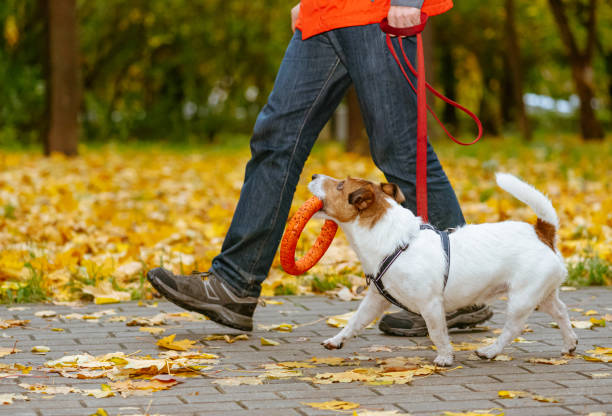In 24 cities

Pawsome Public Walking: Etiquettes to Teach Your Dog!
|
|
Time to read 6 min
Get product availability and delivery timelines based on your location.
Are you sure you want to delete this address?
Help us ensure a smooth delivery
SIZE GUIDE
|
|
Time to read 6 min
Are you tired of your furry friend embarrassing you in public with their unruly behaviour? Do you find yourself struggling to control your dog during walks in public spaces? Well, fear not, because we've got you covered with some basic etiquettes to teach your dog while walking in public spaces.
Dog breeds come in all shapes and sizes, but one thing they all have in common is the need for training. Even the most well-behaved pet dogs can become uncontrollable when out and about. That's why it's essential to teach your dog basic manners when walking in public spaces.
In this blog, we will explore some essential etiquettes that every dog owner should teach their pet. From teaching your dog to walk calmly on a leash to understanding the importance of proper socialization, we'll cover all the basics.
So, whether you're a new dog owner or a seasoned pro, this blog is for you. Let's dive in and start learning “how to train a dog” to be the most well-behaved dog in town!
Are you tired of feeling like you're being dragged down the street every time you take your new dog for a walk? Does your furry friend pull and lunge, making it difficult for you to enjoy your time together? Well, don't worry, because we've got some tips to help you teach your dog to walk calmly on a leash.
Leash training is an essential part of dog training, and it's something that every new dog owner should focus on. A well-trained dog walking calmly on a leash makes for a much more enjoyable experience for both the dog and the owner.
So, how can you teach your dog to walk calmly on a leash? Here are some tips:
Some great products that can help with leash training include a front-clip harness, which can discourage pulling, and a long training leash, which can give your dog more freedom while still allowing you to maintain control.
Remember, leash training takes time and patience, but with the right approach and equipment, you can teach your dog to walk calmly on a leash and enjoy stress-free walks together.
Have you ever encountered a dog that barks, growls, or hides when meeting new people or dogs? This is a sign of a lack of socialization, and it can lead to anxiety, aggression, and other behaviour problems in dogs. That's why it's crucial to socialize your dog with other people and dogs, and we're here to tell you why and how to do it safely.
Socialization is the process of introducing your dog to different experiences, people, and dogs to help them become comfortable and confident in various situations. It's important to socialize your dog from an early age, but even adult dogs can benefit from socialization.
One of the best ways to socialize your dog is through dog walking and visiting dog parks. Here are some tips on how to do it safely:
Socialization is an essential part of pet training, and it can help your dog become a happy, well-adjusted member of your family. With the right approach, you can socialize your dog safely and effectively. So, get out there and start socializing!
Walking a dog isn’t always an easy task and as a new pet owner, walking your dog in public spaces can be both exciting and overwhelming. While it's a great way to get some exercise and spend time with your furry friend, it's also important to ensure that you have control over your dog in these public spaces. That's where basic commands come in.
Basic commands are essential tools that can help you control your dog in public spaces like pet parks, sidewalks, and hiking trails. Here are some of the basic commands that every new pet owner should know:
Teaching your dog these basic commands will not only help you control them in public spaces but also help them become well-behaved and obedient companions. Make sure to practise these commands regularly, especially in different environments to help your dog generalize the commands.With a little practice and patience, you'll be able to enjoy stress-free walks with your furry friend.
As a pet owner, one of the biggest concerns when taking your dog out in public spaces is ensuring they don't have an accident. Potty training your dog is essential to prevent accidents and ensure that they go to the bathroom in appropriate areas. Here are some tips to avoid accidents in public spaces and teach your dog where it's appropriate to go potty.
Teaching your dog where it's appropriate to go potty is essential for avoiding accidents in public spaces. With patience, consistency, and the right products, you can train your dog to go potty in designated areas and enjoy stress-free walks with your furry friend
2 item in cart
₹10,360

